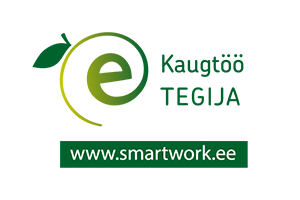 All news
All news

The welcoming words, to launch the conference, were delivered by Mr Velsberg. Ott Velsberg is a renowned Estonian IT specialist and government official, known for his expertise in data governance and data science. As the current Chief Data Officer (CDO) of Estonia, he is responsible for driving the country’s data policy and initiatives related to the use of data in the public sector. Under his leadership, Estonia has gained the reputation of a trendsetter in data governance, open data, and artificial intelligence.
In his presentation, Mr Velsberg focused on the topic of “Building the Next Generation e-Governance Through AI”. He starts by stating that when he started at his current position, only one third of people thought AI would be implemented in their work. “Now, of course, the numbers are vastly different”, he says and delves more into the topic.
The government’s overarching objective is to support people's lives, companies, etc., he claims. To enable living in a society that is supportive and constructive. “Hence, for us, AI is a tool to achieve larger objectives. At the same time, we also strive towards changing how people think about the government via the idea of a proactive government.”
A proactive government, he explains, is about supporting people and companies when the support is actually needed. AI is important in being able to provide that support in Estonian language. Therefore, one of the most important tasks in the coming years is to invest into reaching the state of a proactive, AI-powered, government that makes data-driven decisions. Data-driven decision making suggests, for all types of organisational hierarchies, to actually use the data and make less decisions based on gut feeling.
Mr Velsberg describes that they came up with the solution of an AI that is supported by 4 pillars. Those being education + R&D, the private, the public, and the legal sector. Currently there’s also a fifth pillar, data as an enabler, that affects all other sectors. Early during the project, the objective was not to go to heights, but to build base capacity and accelerate usage. After piloting several projects, it was revealed that people would not lose jobs due to wider spread of AI, but a large quantity of routine tasks could be automated, which would allow people to focus on more meaningful tasks.
The focus areas for an AI-powered government are technology, data as an enabler, competences and skills, and legislation and ethics. Solutions in these fields are created both in-house and in cooperation with, for example, universities. Competences and skills are elevated also throughout the wider population; hundreds of people are being educated in data analytics, which helps to upscale people who are already on the labour market by enabling them to shift fields of profession. To solve problems in a community-driven way there are several annual events, experimenting hackathons, public e-courses, sharing experiences from both public and private sectors. The government also offers expert support in everything the business side needs (idealisation, validation, etc.)
As the next step, Mr Velsberg suggested not to focus only on generative AI because that is limiting the possibilities and proceeded to introduce some of the re-usable solutions created. Those span from open-source platform for government virtual assistant (Bürokratt) to customer contact classifier to machine translation and grammar correctors.
To close the topic, the presenter suggested a few points to take from his presentation:
to focus on making sure what exactly is the business need and how can AI help; to ensure the quality of the data; create re-usable solutions; sustain practical cooperation and to keep the projects short and simple. As a finale, in response to a question regarding what would happen if AI solved all our problems, Mr Velsberg replied that human nature would, nonetheless, instantly start worrying where the next problem would appear from.
You can find full discussion on our Youtube channel. More information at conference homepage

 Student
Student

